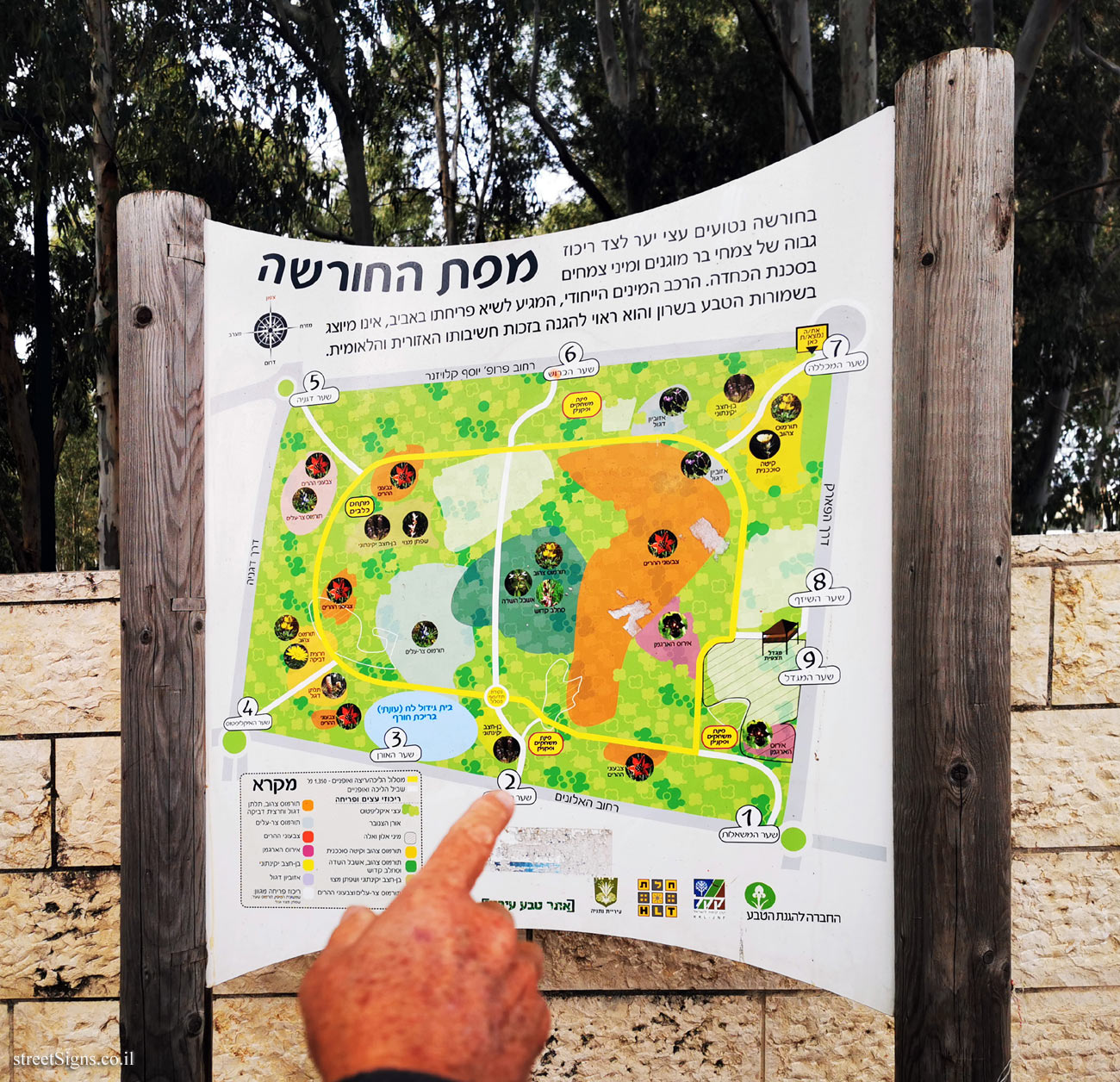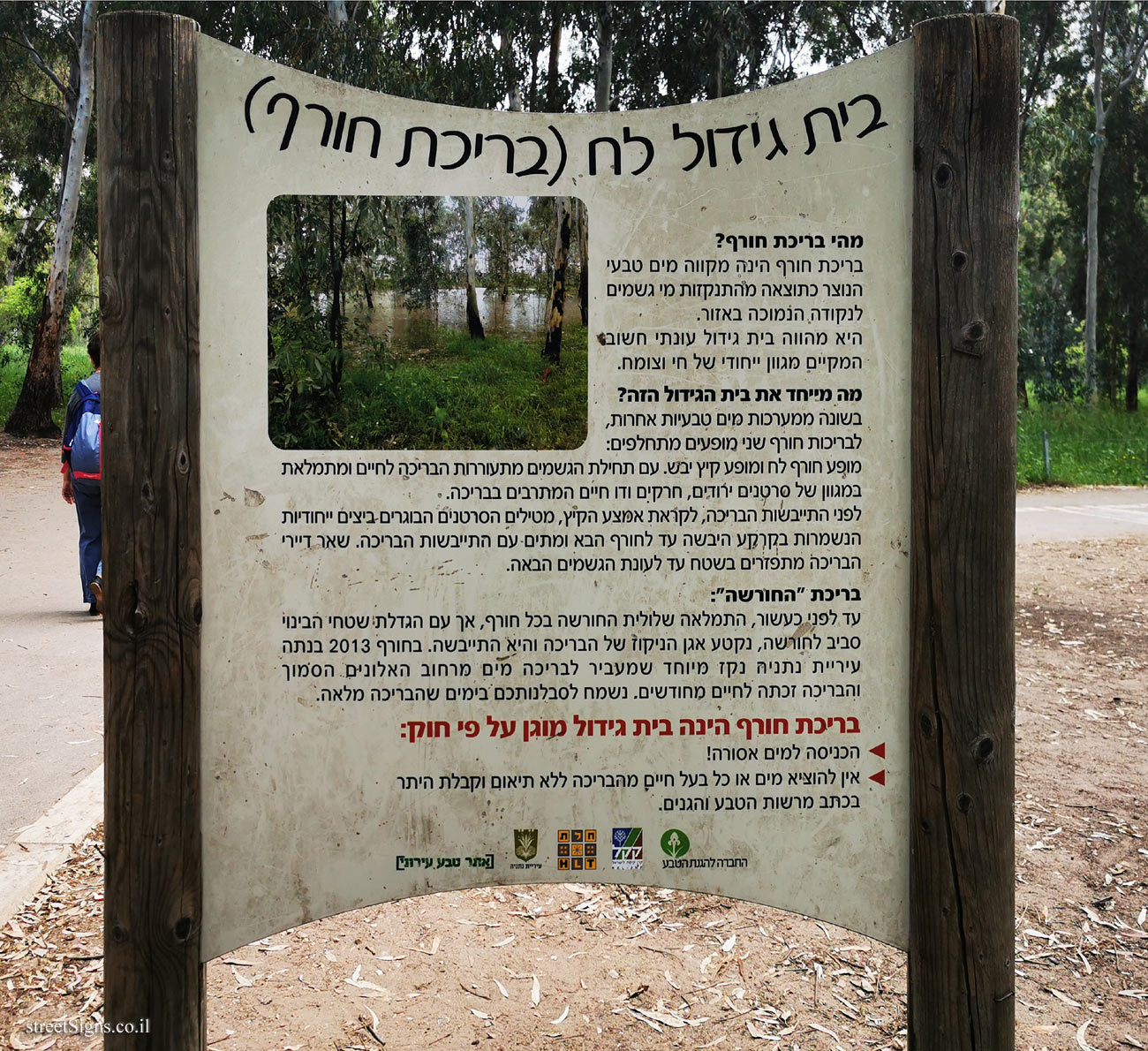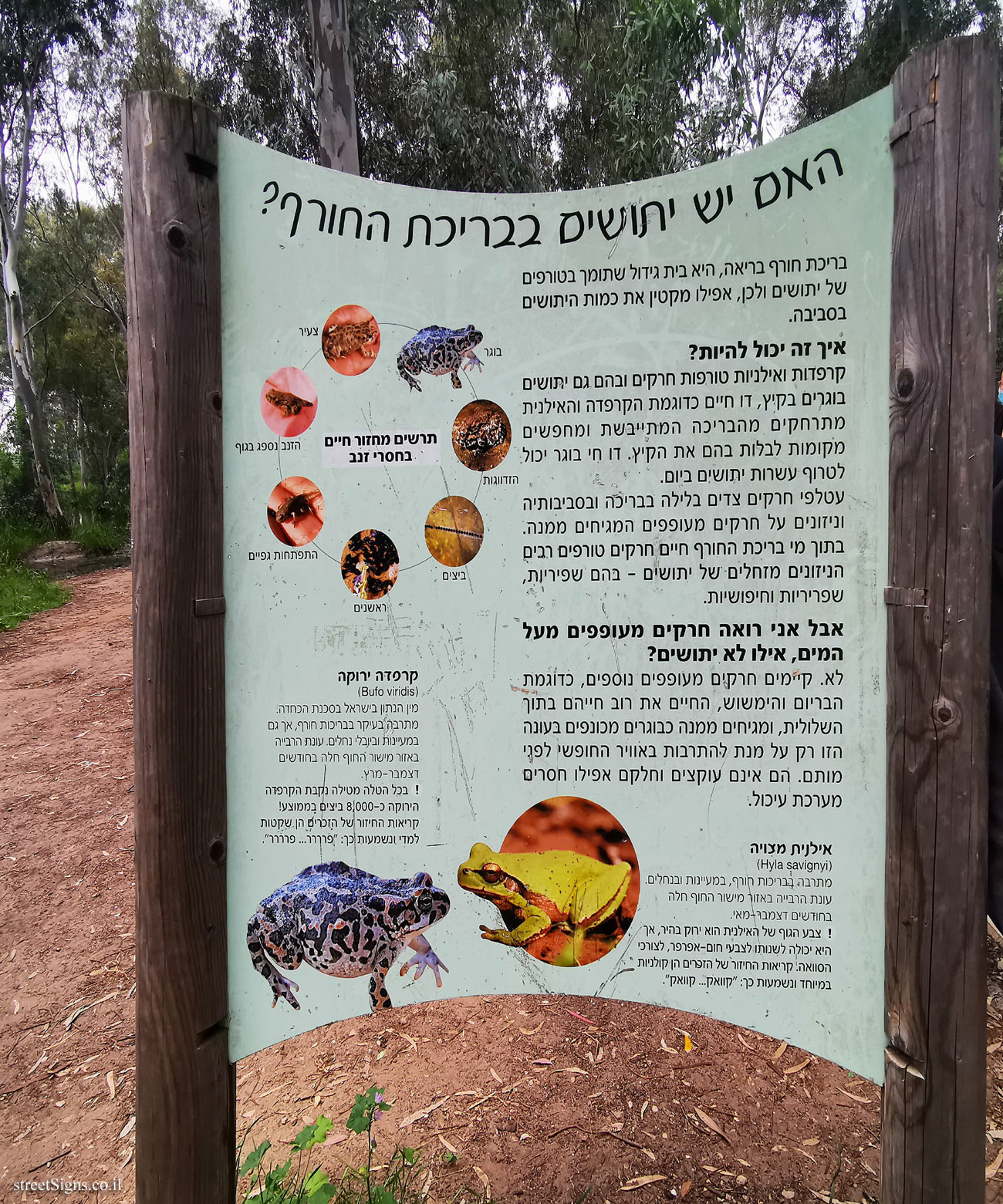One of the signs depicting the flora and fauna of the sergeant’s grove
 Click for sign's details
Click for sign's details The winter pool in question appears on the following sign
 Click for sign's details Translation of the text on the sign
Click for sign's details Translation of the text on the sign:
Are there mosquitoes in the winter pool? A healthy winter pool is a habitat that supports mosquito predators and therefore, even reduces the amount of mosquitoes in the environment.
How can this be? Toads and Middle East tree frogs are insect predators, including adult mosquitoes in the summer, amphibians such as the toad and the Middle East tree frog move away from the drying pool and look for places to spend the summer. An adult amphibian can devour dozens of mosquitoes a day. Insect bats hunt at night in and around the pond and feed on flying insects that emerge from it. Many predatory insects that feed on mosquito larvae live in the water of the winter pond - including dragonflies, damselflies and beetles.
But I see insects flying over the water, which are not mosquitoes? No. There are other flying insects, such as shadfly and Chironomus, that live most of their lives inside the pond, emerging from it as winged adults this season just to reproduce in the open air before they die. They are not stinging and some even lack a digestive system.
Middle East tree frog (Hyla savignyi)
(Hyla savignyi)
Breeds in winter ponds, springs and streams. The breeding season in the coastal plain area occurs in December-May.
The body color of the Middle East tree frog is light green, but it can change to brown-gray colors, for camouflage purposes. The courtship calls of the males are especially loud and sound like this: "Kwak ... Kwak".
Tailless Life Cycle Chart Mating → Eggs → Tadpoles → Limb Development → Tail is absorbed into the body → Young → Mature
European green toad (Bufo viridis)
The endangered species in Israel. Reproduces mainly in winter ponds, but also in springs and stream tributaries. The breeding season in the coastal plain area occurs in December-March.
In each lambing, the female of the green toad lays an average of 8,000 eggs!
The courtship calls of the males are quite quiet and sound like this: "Ferrrr ... Ferrrrr".
Learn about:


 Click for sign's details
Click for sign's details  Click for sign's details
Click for sign's details